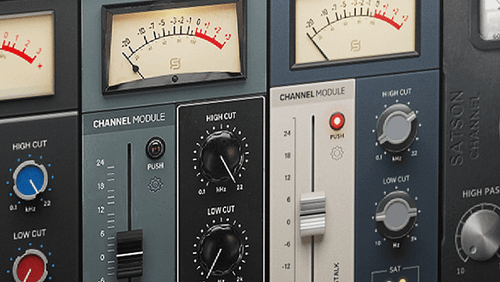SonEQ 2 is a very versatile plug-in that combines the sound of a classic analog equalizer with a modern modular approach. It allows you to create a truly customized EQ for every scenario by changing the full layout of the EQ to your liking and saving it for the future in easily accessible presets.
Another great feature from SonEQ 2 is the ability to automate every single parameter of the plug-in. It might sound like nothing new under the sun. But combine automation with its extremely flexible customization and you can create a great sounding dynamic EQ right in your DAW. Let’s see how you can do it.
Let’s Automate
The first thing we need to do is set up SonEQ 2 the way we want. Changing the order of the modules, adding more bands, slimming down the plug-in, or adding more saturation is as easy as click and drag. You can do it as you start shaping the sound of your track until you are satisfied with the result. But why stop there?
On many occasions, one EQ setup is enough for the overall length of the track. But sometimes we might feel that cymbals get too bright on the verses or the vocals need more warmth at specific points of the song. This is where adding automation to SonEQ 2 can help achieve the dynamic movements that you are after.
The same way you ride the fader of tracks to add movement to the song you can use the same technique to tame or boost frequencies. Set your automation mode to Touch, enable automation for a specific volume knob in SonEQ 2, and start riding it for the section of the song that you want to modify. With the ability to add up to 16 modules inside the same plug-in you can even duplicate the band for an extra boost or cut at specific frequencies without affecting the original EQ. The Touch Moe of the automation will take care of bringing back the knob to its original value.
This technique tends to be more natural than drawing lines in the automation lane since your movements will respond to what you hear. Also, adjusting the release time of the Touch Automation mode in your DAW preferences will help to create smoother transitions. Having some kind of physical controller can be very helpful for increasing precision when writing automation. But if you only have your mouse or trackpad at hand, you can always tweak the performance afterward or do multiple passes until you get the best result.
Some DAWs like Reaper make it even easier to create these dynamic equalizers by using the built-in sidechain in the DAW. Just set the threshold, attack time, and release of the side-chain and let the track do the rest.
Do you use automation on your EQs to make your tracks more dynamic? How do you take advantage of the modularity of SonEQ 2? Share your own tricks in the comments and follow us for more tips on using Sonimus Plugins.\








I know that modern dynamic EQs react automatically to the input signal. The idea behind this article was to help readers to think outside of the box and use flexible tools like SonEQ 2 to create their own effects and obtain equivalent results.